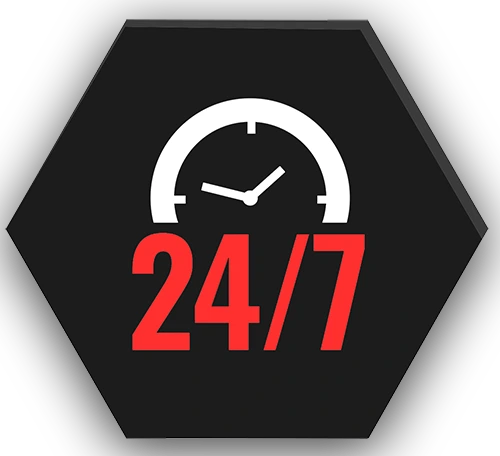Thinking about installing a new AC system in your Salt Lake City home? There’s more to it than just picking a unit and plugging it in. Whether your current system is underperforming or you’re adding cooling to a newly built space, the way your AC is installed directly impacts how well it’ll serve you year after year. Comfort, energy efficiency, and even system lifespan are all closely tied to the quality of the installation process.
Poor installation can lead to airflow problems, uneven cooling, or loud operation that makes the whole system feel like a headache instead of a help. Rework and frequent repairs often stem from shortcuts taken during install day. That’s why it pays to go step by step—and to have qualified professionals handle every part of the process. From evaluating your home’s needs to post-installation testing, thorough work upfront helps avoid serious issues down the line.
Site Assessment and Preparation
An efficient AC system starts with knowing the space it’s going to serve. Before lifting a single tool, our professionals take time to assess your home thoroughly. This isn’t just about checking the space where the equipment will be placed—it’s about identifying the best setup for long-term performance.
During the initial visit, several areas of the home are reviewed, including:
– Room size and layout
– Window placement and sun exposure
– Insulation levels in walls and ceilings
– Location of current or proposed ductwork and electrical access
The team also checks if your existing electrical system can handle the new AC’s power needs. If your breaker panel lacks capacity, upgrades might be needed to support safe and efficient operation. For homes using ducted systems, it’s also important to verify whether existing ductwork is properly sealed and sized to match the new system. This helps prevent energy loss during operation and supports balanced airflow throughout your home.
Finding the right spot for both the indoor and outdoor units is another key piece. A poorly located condenser can lead to overheating or blocked ventilation. Our professionals aim to place equipment where airflow is unrestricted and where sound won’t be a nuisance to windows or outdoor gathering areas. Inside, the air handler or indoor unit should be easily accessible for future service and maintenance.
Every home in Salt Lake City is a bit different. That’s why skipping or rushing this early planning stage creates problems later. A careful site assessment lays the foundation for reliable performance.
Selecting the Right AC Unit
Getting a new AC isn’t just about replacing what’s old. It’s about selecting the right system that fits your home and comfort goals. While a common mistake is choosing the biggest unit you can afford, more capacity doesn’t automatically mean better cooling. Oversized systems can short cycle, wear out quicker, and never fully control humidity indoors. Undersized units, on the other hand, struggle to keep up and run constantly, which drives up your bills.
Our professionals use several factors to help determine what type of unit and capacity your home needs:
– Square footage of living space
– Number of windows and direction they face
– Local climate conditions through the summer
– Number of people living in the home
– Peak occupancy during the day
– Existing duct system or plans for ductless installation
They also consider your energy goals. If you’re looking to cut down on long-term costs, then models with a higher SEER rating may be recommended. Other families may prioritize quieter operation due to lifestyle needs, such as home offices or young children at home. A good fit will strike the right balance between performance, cost, and efficiency.
Consulting with trained technicians helps narrow hundreds of possible models down to the few meant to meet your needs. Choosing carefully at this stage avoids compatibility issues, ensures consistent cooling, and helps extend the system’s working life. A well-selected system performs better, breaks down less often, and uses energy more efficiently during Salt Lake City’s hottest months.
Installation Process: Safe, Secure, and Accurate Setup
Once the right AC system is chosen and the home is fully evaluated, the next step is proper installation. A quality install doesn’t leave room for guesswork. Our technicians follow a structured process to get everything set up safely and correctly.
Here’s what takes place during a typical AC installation in Salt Lake City:
– Removing the old unit, if one exists, and preparing the area for the new components
– Carefully positioning and securing the indoor and outdoor units
– Connecting refrigerant lines and drain systems with care to avoid leaks
– Installing new electrical wiring or updating circuits, if necessary
– Making ductwork adjustments for better airflow and performance
– Ensuring mounting brackets, pads, or supports meet local codes and structural needs
Each of these steps matters—not just for the day of installation, but for how the system runs week after week. For example, if refrigerant lines aren’t sized or charged properly, the system may appear to cool at first but will struggle in peak heat. A loose support bracket or bad wiring connection can create safety risks and early wear.
Even physical placement impacts performance. Units placed too close to fences or landscaping may suffer airflow problems. Heat pumps or condensers near bedrooms might create noise that could’ve been avoided with different positioning.
Our technicians double-check their work as they go. Connections are tested. Mounting points are confirmed. The goal isn’t just getting it working but setting the system up to run efficiently for the long haul.
Post-Installation Diagnostic and Calibration
As soon as the AC unit is installed, testing begins. This initial check-up makes sure that everything functions the way it should before the work is considered complete. Skipping or rushing through this stage can lead to small hiccups that turn into uncomfortable problems for the homeowner a few weeks later.
Our team starts by powering up the system and checking for key issues such as:
– Strange noises from the indoor or outdoor units
– Airflow imbalances in major rooms
– Thermostat syncing or display errors
– Refrigerant line temperature inconsistencies
– Water drainage problems or signs of condensation buildup
The thermostat is then calibrated. That means adjusting settings to make sure the temperature it reads matches the actual room temperature. A thermostat just a few degrees off can cause major cooling problems and higher bills.
We also inspect for any warning indicators—things that wouldn’t shut the unit down immediately but could become bigger problems later. Low refrigerant, airflow obstructions, or slight vibration may seem small but signal future issues if ignored.
By catching all of this before wrapping up the job, the home gets a fully functioning AC system. Nothing is guesswork, and you start off with peace of mind on day one.
Maintaining Long-Term Performance and Efficiency
An AC system may be new, but that doesn’t mean it should be ignored once installed. Like a car, these systems need care to keep them working great. Skipping maintenance is one of the fastest ways to shorten the life of the equipment.
Here are a few ways homeowners in Salt Lake City can keep their AC system running strong:
– Change filters at least every 1–3 months during active use
– Keep the outdoor unit free from leaves, dirt, grass, and debris
– Schedule yearly inspections before the peak summer months
– Monitor energy bills for any unexpected spikes or usage changes
– Don’t ignore warm zones or weak airflow in certain rooms
Regular checkups by our professionals go a step further. Technicians inspect components that aren’t usually visible—checking refrigerant levels, tightening electrical connections, cleaning coils, and making sure moving parts stay lubricated. These small actions prevent bigger problems later, like breakdowns during the hottest week in July or increased power use from a dirty condenser coil.
It also helps spot early signs of wear on parts like fans, contactors, and thermostats, which can often be fixed quickly before things break. With ongoing care, long-term performance and comfort is much more consistent.
Why Professional AC Installation Sets You Up for Success
Professional AC installation ensures more than just a working unit. It means better comfort across all rooms, lower monthly energy use, fewer service calls down the road, and a system that performs close to factory standards.
Many homeowners think the biggest factor in cooling comfort is the equipment itself, but the truth is, proper installation is just as important. A perfect-fit setup, installed and tested by experienced technicians, turns an AC system into a long-term solution instead of a short-term fix.
From planning and load calculations to the post-installation inspection, each part of the process helps your new system serve your Salt Lake City home better for years to come. Think of installation not as a task to complete but as the foundation for dependable home cooling. When done right, it makes all the difference.
If you are ready to secure lasting comfort and efficiency for your home in Salt Lake City, trust Jones Heating & Air Conditioning for professional AC installation in Salt Lake City done with precision and care. For a quick estimate or to book a service visit, please contact us today.



